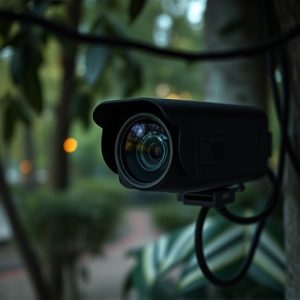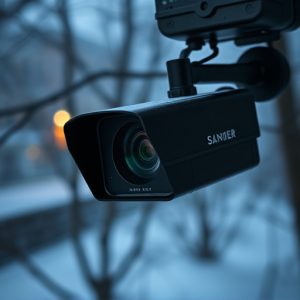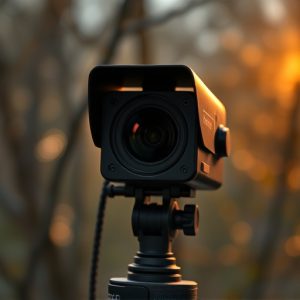Unveiling Hidden Cameras: A Guide to Remote Viewing Nanny Surveillance Systems
Remote viewing technology revolutionizes nanny surveillance by enabling discrete, real-time monitori…….
Remote viewing technology revolutionizes nanny surveillance by enabling discrete, real-time monitoring from a distance using radio frequency (RF) signal interpretation. This advanced system provides clear observation of children's activities and detects hidden cameras through specialized RF detection skills and tools, enhancing security and peace of mind. However, legal and ethical considerations surrounding remote viewing vary by region, requiring users to understand local laws and maintain transparency for responsible use. Effective implementation involves best practices such as using compliant detectors, regular training, open communication, and secure data handling.
Uncover the insidious world of hidden cameras with our comprehensive guide on detecting them via radio frequency (RF). From understanding remote viewing technology in nanny surveillance systems to identifying RF signals from potential hidden camera sources, this article equips you with essential knowledge. Learn effective methods for locating these covert devices and explore legal considerations and ethical use cases. Discover best practices for safe and responsible implementation of RF camera detection techniques.
- Understanding Remote Viewing Technology for Nanny Surveillance Systems
- Identifying Potential Hidden Camera Sources on Radio Frequencies
- Detecting and Locating Hidden Cameras Using RF Signals
- Legal Considerations and Ethical Use of Remote Surveillance Tools
- Best Practices for Safe and Effective Implementation of RF Camera Detection
Understanding Remote Viewing Technology for Nanny Surveillance Systems
Remote viewing technology plays a pivotal role in modern nanny surveillance systems, allowing parents to monitor their children’s activities from afar with remarkable clarity. This cutting-edge feature enables real-time observation through radio frequency (RF) signals, ensuring that every moment is captured and transmitted wirelessly for continuous oversight. By employing specialized equipment and expertise, remote viewing offers a discreet and efficient way to maintain safety and peace of mind.
The process involves the use of advanced sensors and receivers that detect and interpret RF emissions from devices within the surveillance system. This technology ensures that even hidden cameras can be identified and their feeds accessed remotely. Parents can view live video streams or access recorded footage, all while maintaining complete anonymity to avoid alerting potential intruders. With remote viewing capabilities, nanny surveillance systems have evolved to provide unparalleled security for children in various settings.
Identifying Potential Hidden Camera Sources on Radio Frequencies
Identifying hidden cameras using radio frequencies is a specialized art, especially when it comes to covert surveillance devices designed for discrete observation, like remote viewing nanny surveillance systems. These systems operate on specific frequencies, making them detectable with the right tools and knowledge. By tuning into these frequencies, individuals or professionals skilled in remote viewing can uncover potential sources of hidden cameras, ensuring privacy and security.
Devices utilizing radio frequency (RF) signals are prevalent in modern life, from home security systems to baby monitors. However, some malicious actors exploit RF technology for clandestine surveillance. Understanding the unique RF signatures of common devices is key to detecting anomalies that could indicate a hidden camera. For instance, a nanny surveillance system employing remote viewing may transmit on specific channels or use unique modulation patterns that differ from typical consumer electronics, making it recognizable to those with expertise in RF detection.
Detecting and Locating Hidden Cameras Using RF Signals
Detecting hidden cameras using radio frequency (RF) signals is a specialized technique employed by professionals to uncover covert surveillance devices, especially in situations like nanny surveillance or remote viewing. RF detection tools can pinpoint the location of active cameras by intercepting and analyzing the wireless signals they emit. These signals often operate on specific frequencies, making it possible for experts to identify and track down hidden cameras without physical access.
By using advanced RF scanners, professionals can detect even the faintest signals, allowing them to locate cameras concealed in various objects or spaces. This method is particularly useful in high-security areas where traditional visual inspection might be challenging. With remote viewing capabilities, it becomes possible to surveil and confirm the presence of hidden cameras, ensuring privacy and security for individuals in their homes or workplaces.
Legal Considerations and Ethical Use of Remote Surveillance Tools
The legal landscape surrounding remote viewing tools, such as those used in nanny surveillance systems, is complex and varies significantly by jurisdiction. While some regions have strict regulations against covert monitoring, others allow certain forms of remote surveillance with specific restrictions. It’s crucial for individuals considering employing these technologies to understand and adhere to local laws to avoid potential legal repercussions. Unauthorized use of hidden cameras or radio frequency devices can lead to severe penalties, including fines and imprisonment.
Ethical considerations also play a vital role in the discussion around remote viewing tools. The mere existence of such technology raises concerns about privacy invasion and the potential for misuse. It’s essential to balance the benefits of enhanced security and monitoring with the right to privacy. Responsible use entails obtaining informed consent from individuals being watched, especially when it involves children or vulnerable adults. Moreover, transparency in employing these systems can foster trust and ensure that surveillance remains a last resort rather than a routine practice.
Best Practices for Safe and Effective Implementation of RF Camera Detection
When implementing a remote viewing nanny surveillance system using radio frequency (RF) camera detection, safety and effectiveness are paramount. Best practices involve a combination of advanced technology and cautious implementation. Utilize top-tier RF detectors designed to identify hidden cameras, ensuring they comply with relevant standards for safety and accuracy. Regularly update your detection software to counter evolving camera technologies. Maintain open lines of communication with individuals being monitored to ensure their comfort and consent, fostering trust and transparency.
For effective deployment, create a comprehensive plan that identifies potential hiding places for hidden cameras. Conduct thorough scans in stages, starting from less intrusive areas to more private spaces. Train personnel handling the detection system thoroughly, emphasizing ethical use of data and respect for privacy. Ensure secure storage and disposal of detected camera data to maintain confidentiality. Regularly review and update your protocols based on new findings and technological advancements in both surveillance equipment and privacy legislation.
In conclusion, the ability to detect hidden cameras using radio frequency (RF) signals offers a powerful tool for maintaining privacy and safety in various settings, particularly within nanny surveillance systems. By understanding remote viewing technology and implementing best practices, individuals can ensure the ethical and legal use of such tools. The methods outlined in this guide empower users to identify potential hidden camera sources, locate devices, and take proactive measures to protect their privacy. Staying informed about the capabilities and limitations of RF camera detection is crucial for navigating this evolving landscape and safeguarding personal spaces in today’s digital age.


